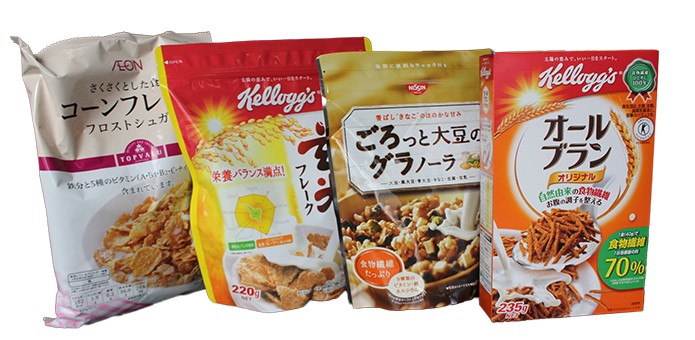
In early 2015, the Nihon Shokuryo Shimbun, a trade newspaper covering the food industry, cited data from the Japan Snack Cereal Foods Association (JASCA) showing that, in 2014, the breakfast cereal market had shipped 50,000 tonnes of the product valued at ¥40bn. Furthermore, that figure was reportedly on a trajectory to reach ¥50bn by 2018. But that total was exceeded in calendar 2015.
The article noted that, over the past several years, consumer demand has been particularly strong for Granola-type cereals, sales of which, in 2014, grew 69.1% in terms of volume shipped and 68% in value.
Last year, the high demand continued. According to Fuji Keizai, a market research firm, sales of all types of breakfast cereals in 2015 grew 26.9% to reach ¥59.8bn. Sales might have been higher had it not been for the industry’s inability to meet consumer demand.
For statistical purposes, JASCA divides cereals into the categories of cornflakes (sweetened and non-sweetened); genmai (unpolished brown rice flour) flakes; granola and other bran-based cereals; rice or wheat-based cereals; and other cereals.
During 2004–14, the market more than doubled, with growth in granola product sales particularly conspicuous, rising from 5.3 tonnes (¥4.2bn in value) to 31,796 tonnes (¥24.5bn in value).
In terms of market share, granola is dominant, accounting for roughly 75% in terms of value.
While traditional Japanese breakfasts accompanied by steamed rice have long been falling out of favour, in the past, cereals were often viewed as confectioneries and consumed mainly by children.
Nowadays, working households are starting to prefer cereals for breakfast, owing to the speed with which they can be prepared, eaten and put away afterwards. Other factors, such as the public’s wider acceptance of dairy products, have also played a part.
While most domestic varieties tend to be over-sweetened and almost unrecognisable as granola to Europeans, Japan’s domestic producers have been experimenting with new types using locally grown fruits and so-called healthy ingredients, including roasted soybeans and natural sweeteners.